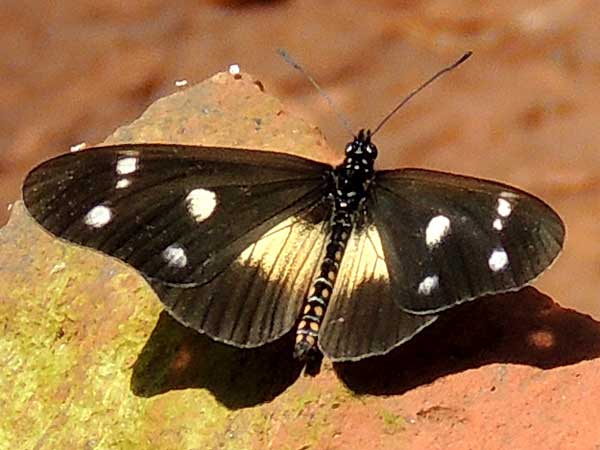Acraea johnstoni

Open secondary woods. Nairobi, Kenya, July 2014.
Many butterflies have striking and beautiful color patterns. We might imagine that the patterns are thus just to please our esthetic values. The survival values that the patterns represent have been great and wonderful puzzles for biologists to unravel. The pattern of this butterfly exhibits two different survival strategies. Firstly, the stark pattern is a warning to especially birds that the insect is defended with toxic compounds within its body, the result of the toxic plants that the immature larva fed upon. The second strategy that biologists have described is mimicry, and specifically Müllerian Mimicry. In this case the butterfly has a pattern very similar to another butterfly, Amauris echeria, which is also defended by plant-derived toxins. The convergent pattern is believed to be a survival trait because it reduces the number of patterns birds must learn to avoid when hunting for insects. Presumably a bird will kill a butterfly or two before finally avoiding the "black butterfly with white spots", but fewer than if there were two or more patterns to learn first.